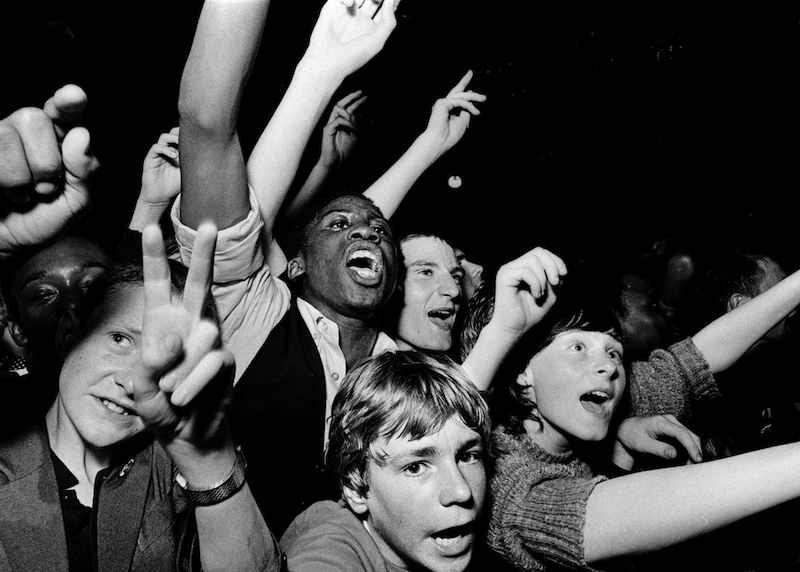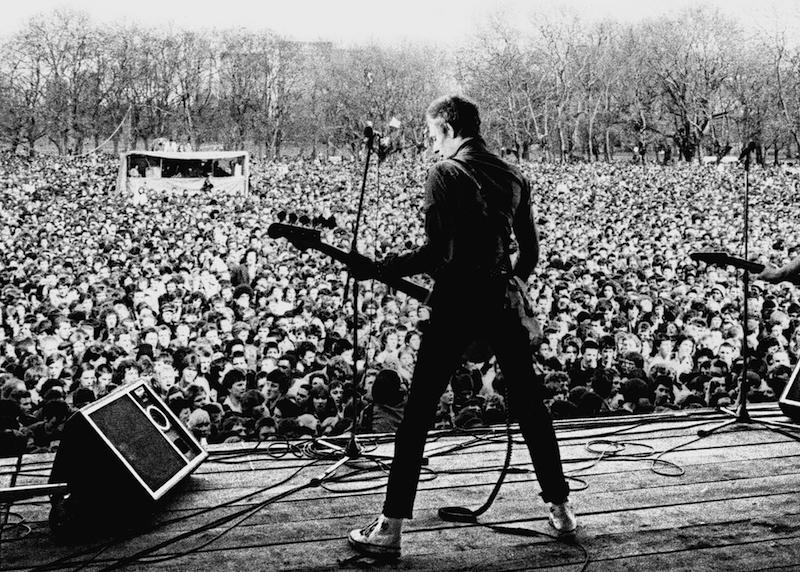This documentary about the 1970s activist movement Rock Against Racism comes with festival prizes and much acclaim. It’s certainly a nostalgic feast for those old enough to remember when punk and reggae musicians were purposely united and it’s a timely release in the age of Grenfell, Windrush and Brexit.
The filmmakers behind White Riot doubtless intend not only to celebrate the surviving veterans of a heroic movement, but also to encourage the current generation faced with resurgent racism. Director/editor Rubika Shah pays heartfelt homage to the now greying radicals who, as young activists, put together radical fanzines exhorting awareness of racism as well as nationwide concerts where black and white musicians shared the stage to seduce young fans away from the neo-Nazis’ siren calls.
In the mid-70s, National Front leader Martin Webster was inflaming racial tensions in cities across the UK, exhorting followers that their beloved nation was at risk of becoming "occupied by a load of khaki-coloured multiracial bastards". Rock stars like Eric Clapton and Rod Stewart were spouting anti-immigrant slogans and even David Bowie (briefly) found fascism fascinating. Some iconoclastic young performers were attracted to Nazi imagery (Siouxsie, Sid Vicious, Adam Ant) and it looked for a while as if punk could go the same way.
Instead, an assortment of left-wingers experienced in agit prop theatre and the counter culture, started to put on gigs with the express aim of countering the neo-Nazi movement. Bands like the Gang of Four, the Clash, X-Ray Spex, Steel Pulse and Matumbi would play on the same stage, pumping out a message that racism was not cool. Jimmy Pursey, lead singer of Sham '69 had a huge skinhead following but joined the Clash to perform the anti-racist anthem, White Riot. Between '76 and '82, local RAR groups sprung up around the country and put on gigs to push the idea that one could love rock and hate racism. Activism wasn't confined to countering racial prejudice but also tackling gay and women's rights too.
Shah's documentary zips through the complex history of Rock Against Racism and its collaboration with the Anti-Nazi League without the aid of commentary. Instead she uses archive (not always captioned, so picking out what’s documentary, what’s TV and what’s actually a feature film is difficult) and faux-fanzine style graphic sequences signpost key events to craft an uplifting tale.
Interviews with veteran counter-culture artists like founders David ‘Red’ Saunders and Syd Shelton, and with musicians like Dennis Bovell, Pauline Black and Topper Headon are intercut with heady footage of the glory days of Rock Against Racism. As well as the music performances, we get a scene-setting whistle stop tour of everyday prejudice on British TV with a montage from sitcoms like It Ain’t Half Hot Mum and Love thy Neighbour.  The history of Rock Against Racism is complex, there were personal and political factions and divided loyalties; RAR’s relationship to the Socialist Workers Party is also somewhat glossed over. For a more nuanced history, it's worth tracking down David Widgery's memoir, Beating Time. While it’s glorious to see the performances and remember the idealistic energy of RAR, it’s perhaps a little too much to imply in a final caption that RAR was victorious in ’79 when the National Front failed to win seats in the General Election. We got Margaret Thatcher’s government, which introduced the punitive anti-immigration legislation which has racked Britain ever since.
The history of Rock Against Racism is complex, there were personal and political factions and divided loyalties; RAR’s relationship to the Socialist Workers Party is also somewhat glossed over. For a more nuanced history, it's worth tracking down David Widgery's memoir, Beating Time. While it’s glorious to see the performances and remember the idealistic energy of RAR, it’s perhaps a little too much to imply in a final caption that RAR was victorious in ’79 when the National Front failed to win seats in the General Election. We got Margaret Thatcher’s government, which introduced the punitive anti-immigration legislation which has racked Britain ever since.














Add comment